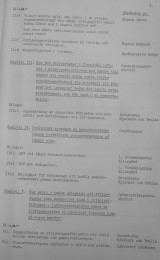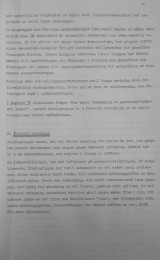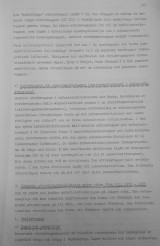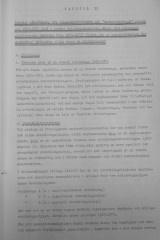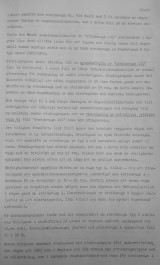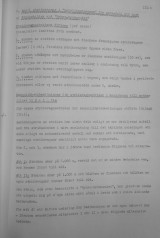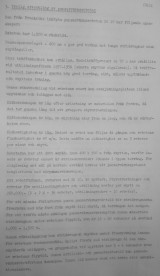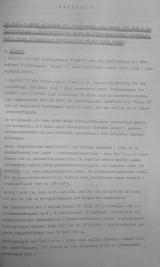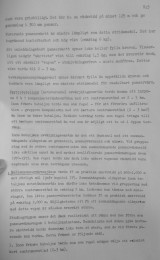Report (May 1958) from the 2nd Equipment Planning Study Group
Original title: Rapport maj 1958 från studiegrupp 2 för fortsatt tygmaterielplanering
The 2nd study group for further equipment planning was responsible for figuring out what kind of requirements would be reasonable to expect from next-generation direct-fire AFV’s (tanks and APC’s, mostly) that were to enter service around 1965. In order to do this, the group considered what the Soviets were doing, what everyone else was doing, current bleeding edge research, where tank development was right now and where it was heading. In May of 1958 the group issued this report, which is a bit over 90 pages long.
The report discusses current trends in tank development, and designates three general lines of development called the A-tank, the T-tank and the S-tank.
- The A-tank (A for America, probably) is the expected result from current US and UK design philosophy. It weighs about 40-45 metric tons and is frontally protected against sub-caliber kinetic penetrators fired from guns of up to 120 mm caliber, with mobility somewhat impaired by its weight. (In reality, this alternative later resulted in the M60 Patton and the Chieftain.)
- The T-tank (T for Tyskland – Germany) is the expected result from current German and French design philosophy. It weighs about 30-35 metric tons and has very high specific engine power (25-30 hp/t or more), but only has frontal protection against (the equivalent of) 57 mm guns. (In reality, this alternative later resulted the Leopard 1 and the AMX-30.)
- The S-tank (S for Sweden) is a proposed turretless Swedish design that has the same protection as the A-tank against kinetic weapons, while weighing only about 30 metric tons. Additionally, since the gun is fixed in the chassis, it can be fitted with screens or lattices that will protect it from all currently known anti-tank missiles and other HEAT penetrators.
The report then goes on to reason about the importance of low tank weight with regards to strategic mobility. For Swedish conditions, tanks should ideally weigh less than 37 metric tons. Based on this and other factors, the authors argue that the army should not purchase upgunned Centurions from the UK, as they are too heavy and an insufficient upgrade over the 84 mm variant. Instead, it is recommended that future Swedish tank development should focus on a) testing the S-tank concept in practice to see if it’s a workable solution, b) start development on a domestic A-tank equivalent (reusing the existing Krv chassis for experiments as necessary), using an autoloader instead of a manual loader to keep the weight down, and c) keep an eye on developments in the US and UK with the intention of purchasing complete tanks if something better/cheaper than the domestic alternatives comes up.
The report also features about a metric ton of appendices, which I have photographed but not published here because they are mainly used as support for the recommendations outlined in the main report and thus not really all that interesting on their own. If you see one you want in the table of contents, leave a comment and ask for it and I’ll post it.
Archive reference: SE/KrA/0266/002/01:H/F III/1



